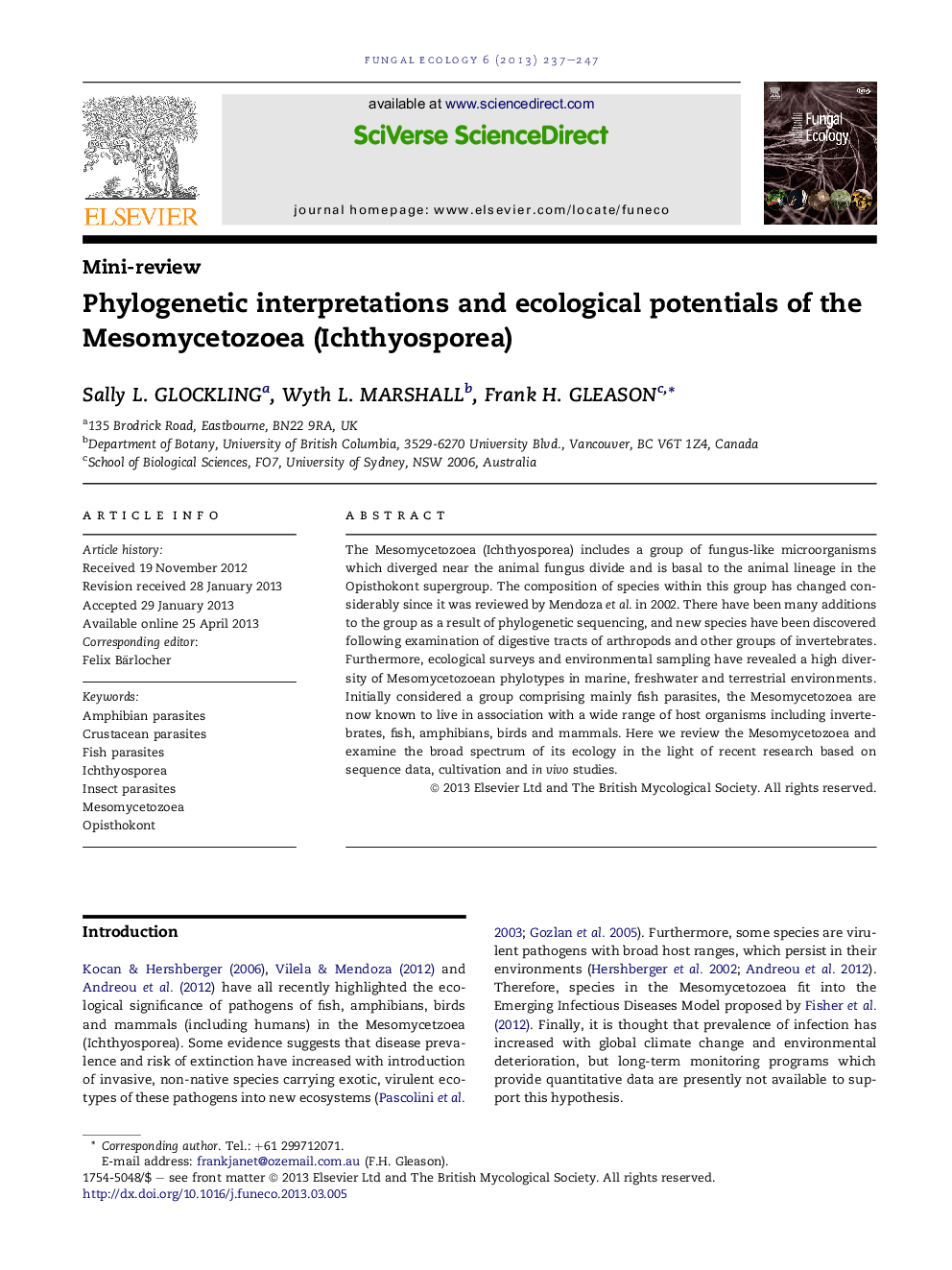| کد مقاله | کد نشریه | سال انتشار | مقاله انگلیسی | نسخه تمام متن |
|---|---|---|---|---|
| 2053572 | 1075485 | 2013 | 11 صفحه PDF | دانلود رایگان |

• Recently, there have been many additions to the Mesomycetozoea.
• Ecological surveys and environmental sampling reveal a high diversity of phylotypes.
• A wide range of animal hosts is infected by Mesomycetozoean symbionts.
• These include insects, crustaceans, fishes, amphibians, birds and mammals.
• Some species cause ecologically important diseases.
The Mesomycetozoea (Ichthyosporea) includes a group of fungus-like microorganisms which diverged near the animal fungus divide and is basal to the animal lineage in the Opisthokont supergroup. The composition of species within this group has changed considerably since it was reviewed by Mendoza et al. in 2002. There have been many additions to the group as a result of phylogenetic sequencing, and new species have been discovered following examination of digestive tracts of arthropods and other groups of invertebrates. Furthermore, ecological surveys and environmental sampling have revealed a high diversity of Mesomycetozoean phylotypes in marine, freshwater and terrestrial environments. Initially considered a group comprising mainly fish parasites, the Mesomycetozoea are now known to live in association with a wide range of host organisms including invertebrates, fish, amphibians, birds and mammals. Here we review the Mesomycetozoea and examine the broad spectrum of its ecology in the light of recent research based on sequence data, cultivation and in vivo studies.
Journal: Fungal Ecology - Volume 6, Issue 4, August 2013, Pages 237–247